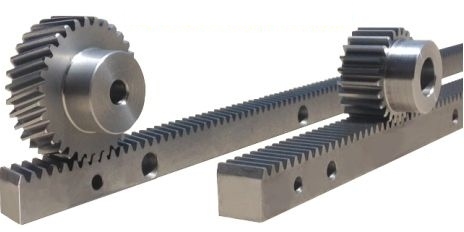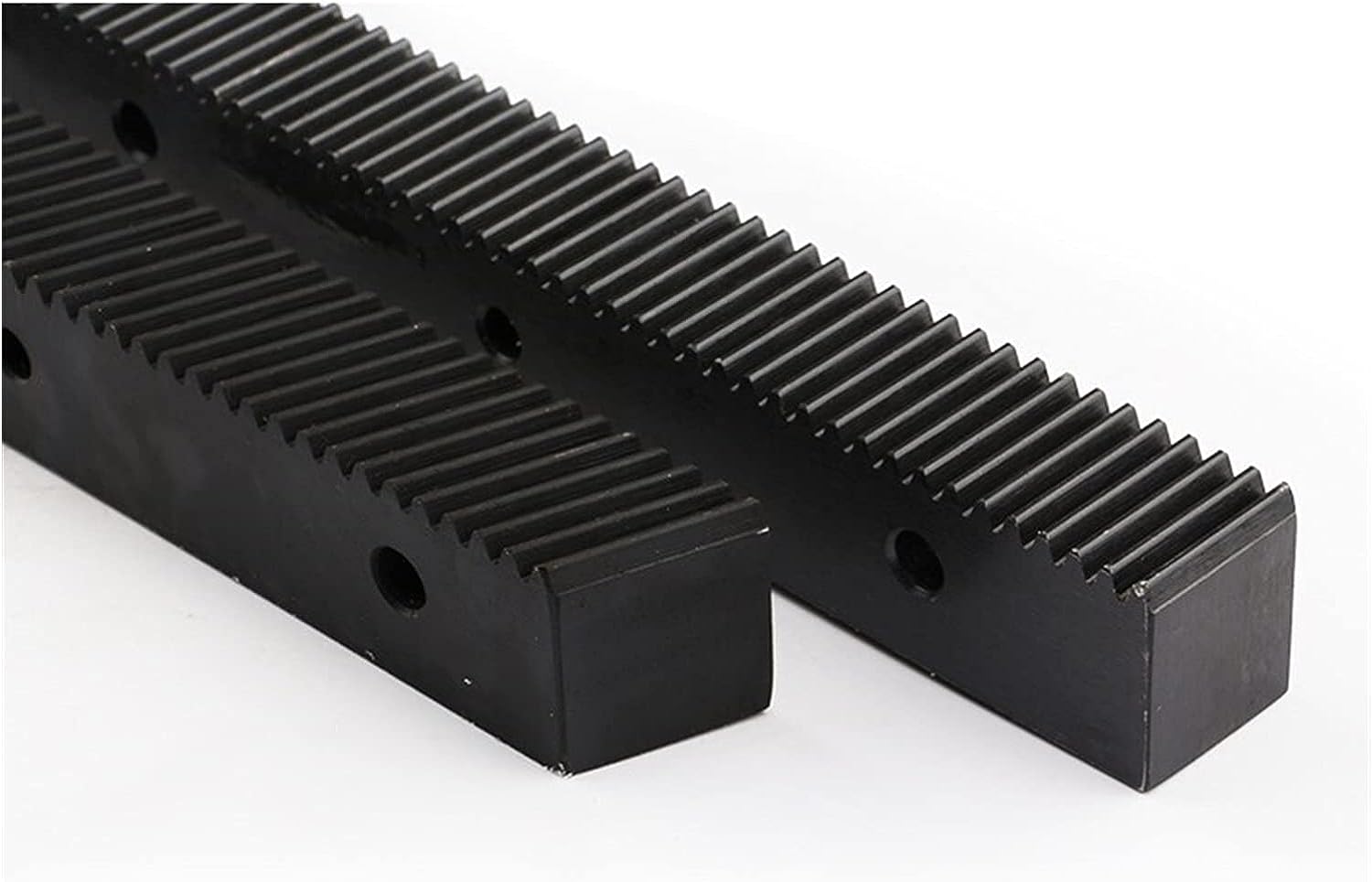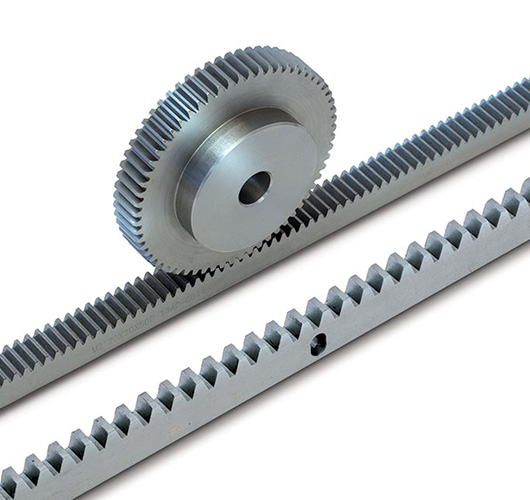Product Description
M1.5 M2 M2.5 Gear Rack Sliding Gate Opener LINEAR Cylindrical Cnc Curved Helical Stainless Steel Straight Pinion Gear Racks
|
Product name |
Gear rack |
|||
|
Type |
Helical gear rack,spur gear rack,sliding gate gear rack |
|||
|
Module |
M1,M1.5,M2,M2.5,M3,M4,M5,M6,M8,M10 |
|||
|
Precision |
DIN6,DIN7,DIN8,DIN9 |
|||
|
Surface treatment |
Black oxide,zinc galvanize, heat treatment, |
|||
|
Material |
Carbon steel,stainless steel,brass,pom,nylon,plastic |
|||
|
Process method |
CNC machining, Turning, milling ,drilling, grinding,shaving,shaping,hobbing |
|||
|
Application |
Automotive Parts,Hareware Par,Construction,Machinery, |
|||
|
Standard |
ISO |
|||
Related products
/* January 22, 2571 19:08:37 */!function(){function s(e,r){var a,o={};try{e&&e.split(“,”).forEach(function(e,t){e&&(a=e.match(/(.*?):(.*)$/))&&1
| After-sales Service: | Installation Guide |
|---|---|
| Warranty: | 1.5 Years |
| Type: | Gear Rack |
| Application: | Excavator |
| Certification: | CE, ISO9001: 2000 |
| Condition: | New |
| Samples: |
US$ 9999/Piece
1 Piece(Min.Order) | |
|---|

What types of materials are commonly used for metric gear rack components?
Various materials are commonly used for metric gear rack components, depending on the specific application requirements and desired performance characteristics. Here’s a detailed explanation of the commonly used materials for metric gear rack components:
1. Steel Alloys: Steel alloys are widely used for gear rack components due to their excellent strength, durability, and wear resistance. Different types of steel alloys, such as carbon steel, alloy steel, and stainless steel, are employed based on the specific application needs. Carbon steel is commonly used for general-purpose gear racks, while alloy steel offers enhanced strength and hardness, making it suitable for heavy-duty applications with high loads and demanding operating conditions. Stainless steel is preferred when corrosion resistance is a critical requirement.
2. Cast Iron: Cast iron is another popular material choice for gear rack components. It offers good strength, wear resistance, and damping properties, making it suitable for applications that require noise reduction and shock absorption. Cast iron gear racks are commonly used in machinery and equipment where quiet operation is essential, such as in automotive transmissions and industrial machinery.
3. Non-Ferrous Alloys: Non-ferrous alloys, including bronze, brass, and aluminum, are utilized for gear rack components in certain applications. Bronze is known for its excellent wear resistance, low friction properties, and high load-carrying capacity, making it suitable for heavy-duty applications. Brass, a copper-zinc alloy, offers good corrosion resistance and is often used in gear racks for marine and outdoor applications. Aluminum alloys are lightweight and have good thermal conductivity, making them suitable for applications where weight reduction and heat dissipation are important considerations.
4. Plastics: Certain high-performance plastics, such as polyamide (nylon), acetal (polyoxymethylene), and polyetheretherketone (PEEK), are used for gear rack components in specific applications. Plastics offer advantages such as self-lubrication, low noise generation, and resistance to chemicals and corrosion. They are commonly employed in applications where weight reduction, low friction, and quiet operation are critical, such as in automotive, medical, and food processing equipment.
5. Composite Materials: Composite materials, comprising a combination of fibers (such as carbon fiber or fiberglass) and a resin matrix (such as epoxy or polyester), are utilized in specialized gear rack applications that require high strength, lightweight construction, and resistance to extreme conditions. Composite gear racks offer advantages such as high stiffness-to-weight ratio, excellent fatigue resistance, and resistance to chemicals and temperature variations. They find applications in aerospace, defense, and high-performance machinery.
It is important to note that the selection of materials for gear rack components depends on factors such as the application requirements, load capacity, operating conditions (such as temperature and humidity), desired wear resistance, and cost considerations. Engineers and designers evaluate these factors to choose the most suitable material that balances performance, durability, and cost-effectiveness for the specific application.
In summary, the common materials used for metric gear rack components include steel alloys (carbon steel, alloy steel, stainless steel), cast iron, non-ferrous alloys (bronze, brass, aluminum), plastics (polyamide, acetal, PEEK), and composite materials. Each material offers specific advantages in terms of strength, wear resistance, corrosion resistance, weight reduction, or specialized properties, allowing engineers to select the material that best meets the requirements of the gear rack application.

How do metric gear racks contribute to efficient power transmission?
Metric gear racks play a significant role in enabling efficient power transmission in various mechanical systems. Here’s a detailed explanation of how metric gear racks contribute to efficient power transmission:
1. Direct and Positive Power Transfer: Gear racks provide a direct and positive power transfer mechanism. When meshed with a mating gear, such as a spur gear or a helical gear, the teeth of the gear rack engage with the teeth of the gear, creating a mechanical linkage. This direct engagement ensures a positive power transfer without slippage or energy loss, resulting in efficient power transmission from the driving gear to the gear rack.
2. High Load-Carrying Capacity: Gear racks are designed to handle high loads and transmit power efficiently. The teeth of the gear rack distribute the load along the entire length of the rack, allowing for increased load-carrying capacity compared to other types of power transmission components. This high load-carrying capacity ensures efficient power transmission without excessive wear or deformation, even under heavy loads or dynamic conditions.
3. Efficient Force Distribution: The tooth profile of the gear rack is carefully designed to ensure uniform force distribution along the teeth engagement. This uniform force distribution minimizes localized stress concentrations and allows for efficient power transmission across the entire gear rack. It helps prevent tooth breakage, excessive wear, and premature failure, resulting in improved power transmission efficiency and longevity.
4. Precision and Accuracy: Metric gear racks are manufactured to precise dimensions and tooth profiles, ensuring accurate and repeatable motion transmission. The precision of the teeth engagement between the gear rack and the mating gear contributes to efficient power transmission by minimizing backlash, vibrations, and energy losses associated with misalignment or inconsistent meshing. This precision allows for smooth and reliable power transfer, particularly in applications that require high positional accuracy or synchronized motion.
5. Customizability and Versatility: Metric gear racks offer flexibility in design and customization, allowing engineers to optimize power transmission efficiency for specific applications. They are available in various sizes, modules, and materials, enabling the selection of the most suitable gear rack for a given application’s requirements. The ability to choose the appropriate gear rack ensures efficient power transmission by matching the rack’s specifications to the load, speed, and environmental conditions of the system.
6. Efficient Lubrication and Maintenance: Proper lubrication is crucial for efficient power transmission and the longevity of gear racks. Adequate lubrication reduces friction and wear between the gear rack and the mating gear, resulting in improved power transmission efficiency. Additionally, gear racks are designed for ease of maintenance, allowing for periodic inspection, lubrication, and replacement, if necessary. Regular maintenance helps to ensure optimal performance and efficient power transmission over the gear rack’s service life.
7. Application-Specific Optimization: Metric gear racks can be optimized for specific applications to further enhance power transmission efficiency. Factors such as tooth profile design, material selection, surface treatments, and gear geometry can be tailored to minimize friction, reduce noise, increase wear resistance, and improve overall efficiency. By considering the specific requirements and constraints of the application, engineers can optimize gear rack design and configuration to achieve the highest possible power transmission efficiency.
In summary, metric gear racks contribute to efficient power transmission through direct and positive power transfer, high load-carrying capacity, efficient force distribution, precision and accuracy, customizability and versatility, proper lubrication and maintenance, and application-specific optimization. These factors ensure reliable and efficient power transmission in various mechanical systems, enabling the effective transfer of power from the driving gear to the gear rack while minimizing energy losses, wear, and misalignment-related issues.

How does a metric gear rack differ from other types of gear racks?
A metric gear rack differs from other types of gear racks in several ways. Here’s a detailed explanation of the differences between a metric gear rack and other types of gear racks:
1. Measurement System: The primary difference lies in the measurement system used for defining the gear rack dimensions. A metric gear rack follows the metric system of measurement, where the module represents the size of the gear teeth. In contrast, other types of gear racks, such as inch gear racks, use the inch-based system of measurement, where the diametral pitch or circular pitch is used to specify the gear tooth size. The use of different measurement systems distinguishes metric gear racks from other types of gear racks.
2. Tooth Profile: Metric gear racks typically have a straight-sided tooth profile, known as the involute profile. This tooth profile is widely used in metric gear systems and ensures smooth and efficient tooth engagement with mating gears or pinions. In contrast, other types of gear racks may have different tooth profiles based on the specific gear system they are designed for. For example, inch gear racks may use tooth profiles such as the circular or diametral pitch profile. The tooth profile variations differentiate metric gear racks from other types of gear racks.
3. Standardization: Metric gear racks benefit from a higher degree of standardization compared to other types of gear racks. The metric system is widely adopted and standardized in many countries and industries, promoting compatibility and interchangeability of metric gear rack components. This standardization simplifies the selection, integration, and replacement of metric gear racks in machinery. On the other hand, other types of gear racks may have variations in tooth profiles, dimensions, and standards, leading to less universal compatibility and interchangeability.
4. Application Areas: Metric gear racks are commonly used in industries and countries where the metric system is prevalent. They find extensive application in machinery and equipment designed and manufactured based on metric specifications. Other types of gear racks, such as inch gear racks, are typically used in regions or industries where the inch-based measurement system is more prevalent. The choice of gear rack type depends on the specific application requirements and the measurement system adopted in the target market.
5. Availability: Due to the widespread adoption of the metric system in many countries, metric gear racks are generally more readily available in the market compared to other types of gear racks. There is a wide range of metric gear rack options offered by various manufacturers, providing greater accessibility and availability for machinery designers and manufacturers. However, the availability of other types of gear racks may vary depending on the specific region or industry where they are commonly used.
While the measurement system, tooth profile, standardization, application areas, and availability differentiate metric gear racks from other types of gear racks, it’s important to note that the fundamental purpose of all gear racks remains the same – to provide linear motion, precise positioning, and motion control in machinery and mechanical systems.


editor by Dream 2024-04-29